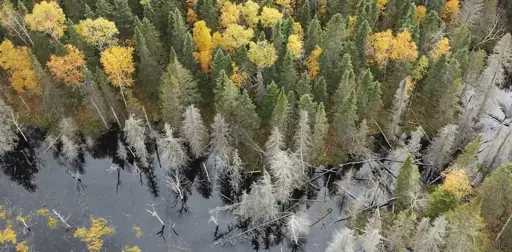Author information:
Charles Marty
Adjunct professor, Carbone boréal, Université du Québec à Chicoutimi (UQAC)
Excerpt from article:
The autumn has arrived and northeastern North America’s forests will soon grace us with a breathtaking palette of reds, yellows and golds. These vivid colours will then fade, giving way to bare branches, as the fallen leaves blanket the forest floor, thereby returning their nutrients to the soil. The spectacle is not as impressive a few degrees farther north, where deciduous trees give way to conifers, which keep their dark green needles through the winter.
These contrasting landscapes are familiar to all of us but have you ever wondered why some tree species shed their leaves in autumn, whereas others don’t, remaining green throughout the year? Why do these two leaf habits co-exist? Do they reflect an adaptation to their environment? These questions have intrigued ecologists for a long time, but it’s only in the past decades that a clear conceptual and theoretical framework has emerged allowing a better understanding of the ecological significance of this trait.



Thanks for sharing!